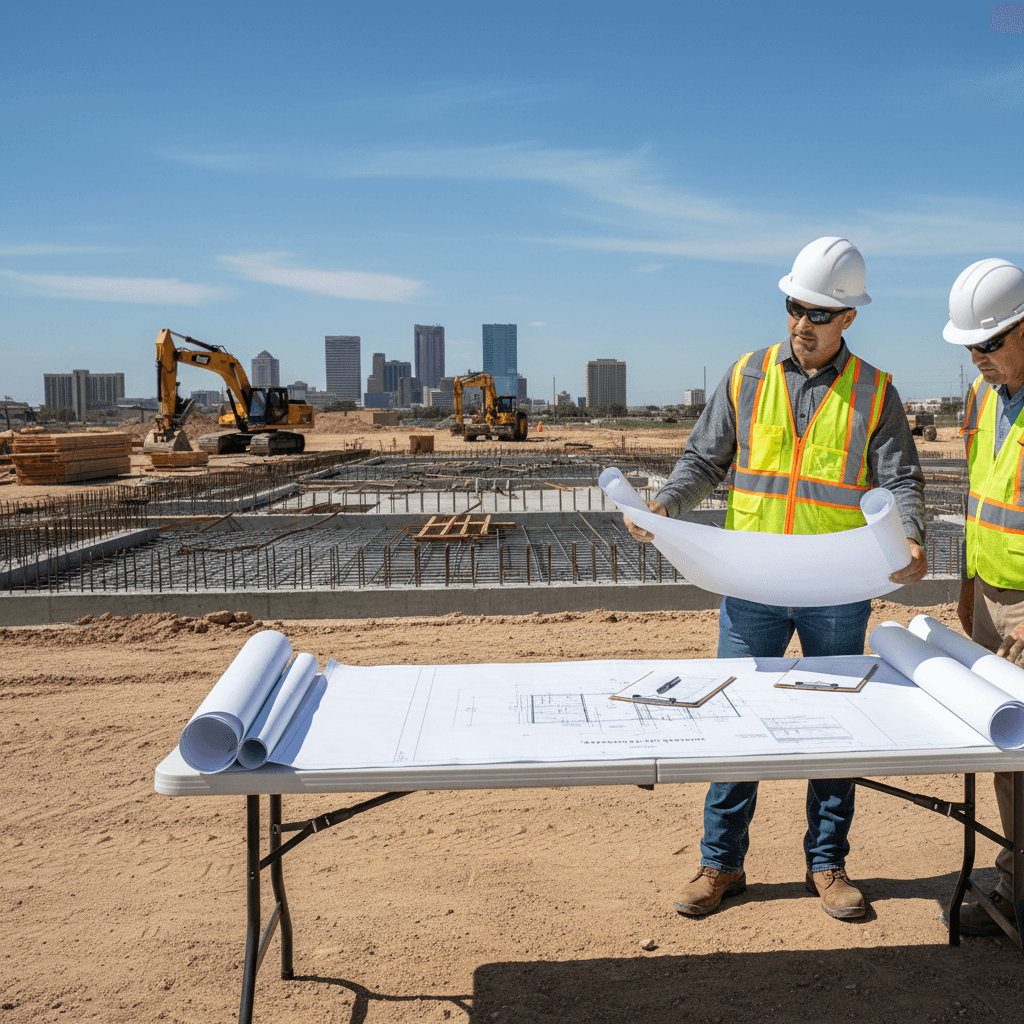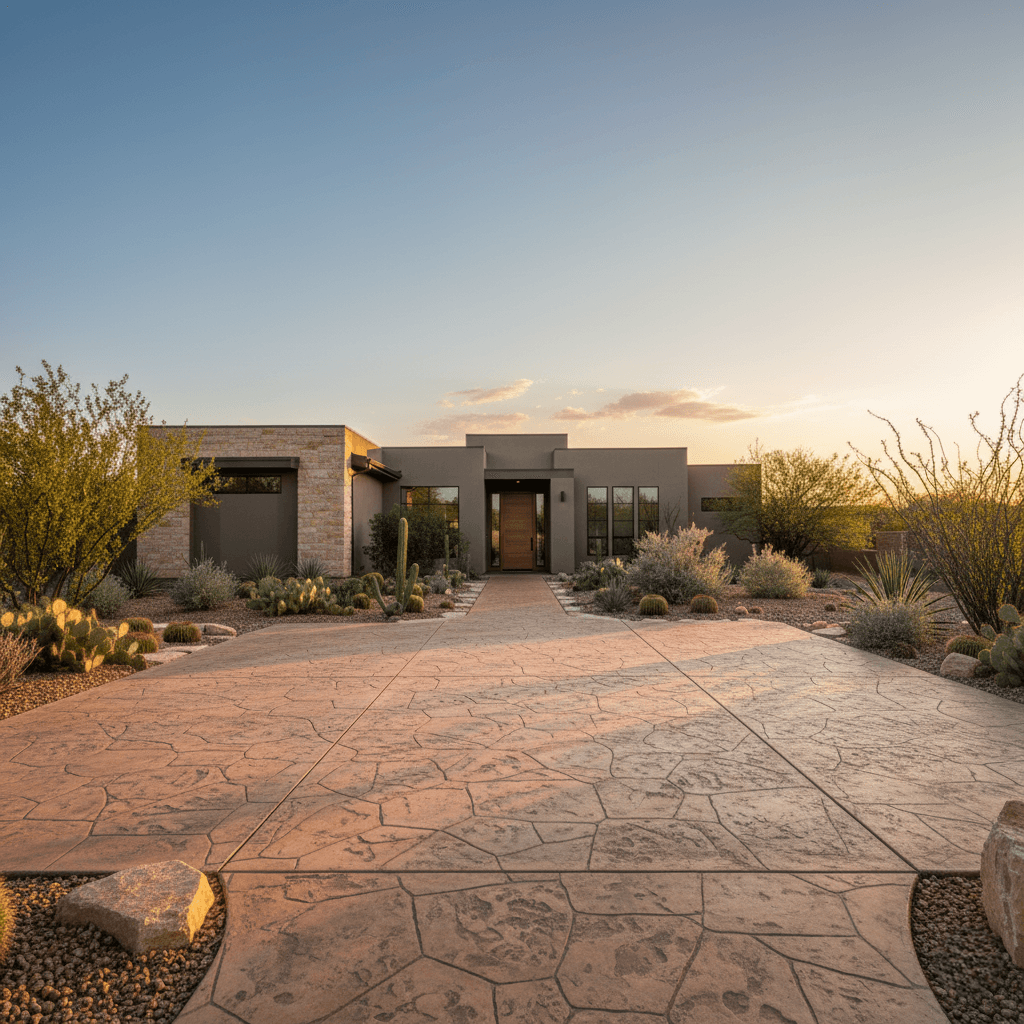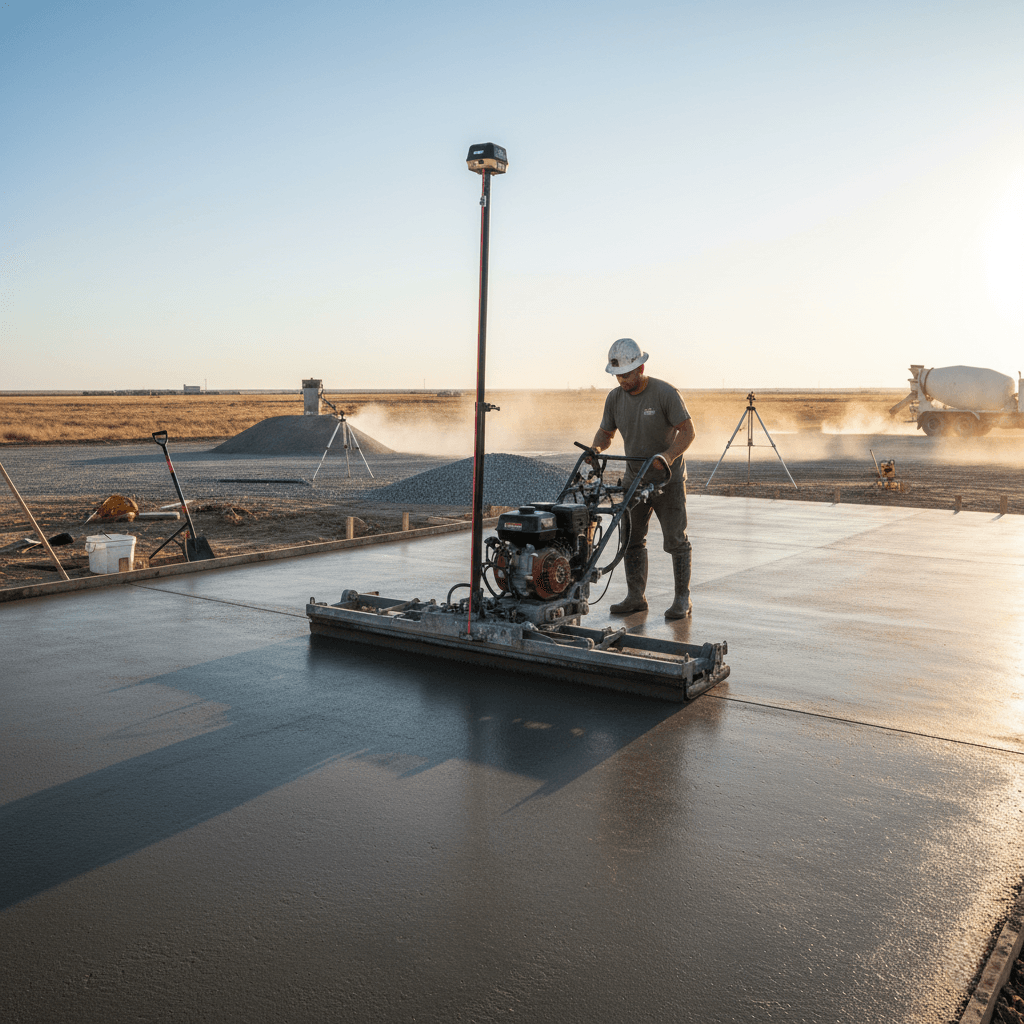
Stamped Concrete Patterns That Suit Midland’s Desert Landscape
Stamped Concrete Midland
Selecting the right stamped concrete patterns for Midland homes requires understanding how desert landscape aesthetics complement various textures, colors, and design elements that enhance rather than compete with the natural West Texas environment. The expansive horizons and earth-toned beauty surrounding areas like Green Acres Mini Golf and Susie’s South Forty inspire concrete designs that echo the region’s natural stone formations and desert flora. We at Midland Concrete Services specialize in creating stamped concrete surfaces that harmonize with the Permian Basin’s unique character while providing durable, low-maintenance outdoor living spaces. Professional pattern selection considers both aesthetic appeal and practical performance in desert climate conditions including intense sun, occasional severe weather, and temperature fluctuations throughout the year. Understanding these design principles helps homeowners create outdoor spaces that feel authentically connected to their desert surroundings.

Natural Stone Patterns for Desert Harmony
Flagstone patterns capture the irregular, organic shapes found in natural stone formations throughout West Texas, creating surfaces that appear to have been crafted by nature itself. These patterns work exceptionally well in desert tan, sandstone, and weathered gray color combinations that mirror the geological formations visible throughout the Permian Basin region. Random stone textures provide varied surface relief and visual interest while maintaining the authentic appearance of hand-laid stonework. Ashlar slate patterns offer more structured geometry while still maintaining natural stone aesthetics that complement desert landscapes perfectly.
Regional Stone Inspiration
Texas limestone patterns reflect the native stone found throughout the region, providing authentic local character that feels naturally integrated with the surrounding landscape. Sandstone textures capture the warm, earthy tones and subtle grain patterns characteristic of regional stone formations. Fieldstone patterns create rustic, weathered appearances that echo the naturally occurring rock outcroppings found throughout West Texas. Canyon rock textures provide dramatic surface variations that mirror the geological diversity of the surrounding desert terrain.
Color Palettes That Complement Desert Environments
Desert tan base colors provide warm, neutral foundations that harmonize with the natural earth tones prevalent throughout the Permian Basin landscape. Terra cotta and burnt orange accents echo the stunning sunset colors that paint West Texas skies while adding visual warmth to outdoor living spaces. Sandy beige and cream combinations create bright, welcoming surfaces that reflect heat while maintaining comfortable surface temperatures during hot summer months. Sage green and dusty blue accent colors complement native desert vegetation and add subtle color variation without overwhelming the natural palette.
Multi-Tone Design Strategies
Graduated color schemes use subtle transitions from light to dark tones within the same color family to create natural-looking depth and dimension. Antique release agents add realistic aging effects that create authentic weathered appearances reminiscent of naturally weathered stone surfaces. Integral color combined with color hardeners produces rich, varied tones that won’t fade or wear away even under intense desert sun exposure. Border treatments using complementary colors define spaces while maintaining visual harmony with the overall design scheme.
Wood Grain Patterns for Desert Modern Style
Weathered wood textures provide the warmth and natural appeal of timber without the maintenance challenges wood faces in arid desert conditions. Barnwood patterns offer rustic charm that complements ranch-style architecture common throughout Midland while providing superior durability against weather extremes. Cedar plank textures create sophisticated linear patterns that work well with contemporary desert modern architectural styles. Driftwood finishes in gray and white-washed tones provide coastal-inspired alternatives that feel fresh and contemporary in desert settings.
Southwestern Wood Aesthetics
Reclaimed timber patterns capture the character of aged wood commonly found in southwestern architecture and design traditions. Hand-hewn beam textures provide authentic rustic character that complements the agricultural heritage of the Permian Basin region. Distressed plank patterns offer vintage charm that pairs beautifully with desert landscaping and native plant materials. Smooth wood grain textures provide cleaner, more contemporary appearances while maintaining natural warmth and visual interest.
Geometric and Contemporary Patterns
Large format tile patterns create clean, modern aesthetics that complement contemporary architecture while providing practical benefits like fewer joints and easier maintenance. Herringbone designs add sophisticated visual interest through geometric repetition that creates dynamic surface patterns without overwhelming desert landscape views. Hexagonal patterns provide a unique geometric appeal that works particularly well in pool decks and patio applications. Linear patterns using rectangular shapes create streamlined appearances that emphasize the expansive quality of desert landscapes.
Modern Desert Design Integration
Minimalist patterns with clean lines complement contemporary desert architecture while allowing landscape features to remain the primary visual focus. Oversized geometric shapes create bold statements appropriate for large outdoor areas common in desert residential design. Grid patterns provide a structured organization that works well with formal landscaping designs and architectural elements. Custom scoring techniques can create unique geometric patterns tailored to specific architectural features or landscape designs.
Texture Considerations for Desert Climates
Light textures reflect heat more effectively than smooth surfaces, helping maintain comfortable temperatures for barefoot walking during hot summer months. Slip-resistant textures provide safety benefits around pool areas and water features while maintaining attractive appearances. Deep relief patterns create interesting shadow play throughout the day as the sun moves across the desert sky. Subtle textures provide visual interest without creating surfaces that are difficult to clean or maintain in dusty desert conditions.
Performance-Based Texture Selection
Medium-depth textures balance aesthetic appeal with practical maintenance considerations in desert environments where dust and debris accumulate regularly. Directional textures can be oriented to complement prevailing wind patterns and reduce dust accumulation in outdoor living areas. Smooth-to-textured transitions create designated zones for different activities while maintaining visual continuity throughout outdoor spaces. Anti-slip additives can be incorporated into stamped surfaces to enhance safety without compromising aesthetic appeal.
Pattern Scale and Proportion
Large-scale patterns work well in expansive desert settings where vast open spaces can accommodate bold design elements without appearing overwhelming. Small-scale patterns provide intimate character suitable for courtyards, entry areas, and smaller outdoor living spaces. Mixed-scale combinations create a visual hierarchy that guides movement through outdoor areas while maintaining design coherence. Proportional relationships between patterns and surrounding landscape elements ensure harmonious integration with desert environments.
Site-Specific Scale Considerations
Building scale influences pattern selection, with larger structures accommodating bolder patterns while smaller buildings benefit from more subtle design approaches. Landscape scale affects pattern choice, as expansive desert views call for patterns that complement rather than compete with the natural scenery. Activity area scale determines appropriate pattern complexity, with entertainment areas supporting more elaborate designs than simple walkways or service areas. Visual distance considerations ensure patterns remain effective when viewed from various locations throughout outdoor spaces.
Maintenance and Longevity in Desert Conditions
Sealed stamped concrete surfaces resist fading, staining, and weather damage that can affect other materials in harsh desert conditions. Regular maintenance involves simple cleaning and occasional resealing to maintain appearance and performance over decades of service. Dust resistance varies with texture depth and surface treatments, with properly sealed surfaces requiring less frequent cleaning. Color stability depends on quality pigments and proper sealing that protects against UV degradation common in high-altitude desert environments.
Long-term Performance Strategies
Preventive maintenance schedules help maintain appearance and extend service life while minimizing repair needs and costs over time. Quality sealers provide ongoing protection against weather, UV exposure, and normal wear while enhancing color depth and surface appeal. Proper drainage design prevents water pooling and related problems during occasional heavy rainfall events common in desert climates. Professional inspection services identify potential issues early when corrections are less costly and more effective than emergency repairs.
Integration with Desert Landscaping
Pattern transitions between stamped concrete and planted areas should complement natural growth patterns of desert vegetation and native plant materials. Color coordination with existing hardscape elements creates unified outdoor environments that feel intentionally designed rather than randomly assembled. Border treatments define planted areas while providing practical benefits like root barriers and irrigation zone separation. Transition zones between different surface materials require careful planning to ensure visual continuity and practical functionality.
Native Plant Compatibility
Xerophytic plant selections work well with stamped concrete as both require minimal water while providing maximum visual impact in desert settings. Drainage considerations ensure proper water management around both planted areas and concrete surfaces during occasional heavy rainfall events. Root protection measures prevent damage to stamped surfaces while allowing healthy plant growth and development over time. Mulch and gravel transitions provide attractive connections between concrete surfaces and planted desert landscaping near areas like the Midland Community Theatre district.
Choosing the right stamped concrete patterns for your Midland home creates outdoor living spaces that celebrate the natural beauty of West Texas while providing practical, durable surfaces for years of enjoyment. At Midland Concrete Services, we understand how to select and execute patterns that honor the desert landscape while meeting your specific functional and aesthetic needs throughout the unique environment of the Permian Basin.


